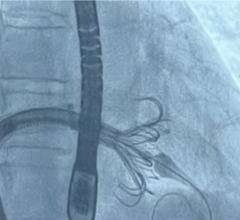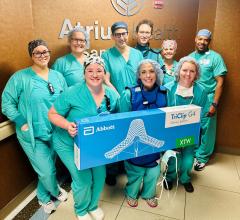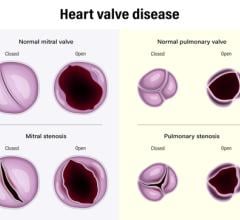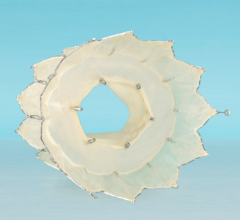
May 20, 2014 — Transcatheter Technologies GmbH, an emerging medical device company that is developing a third-generation transcatheter aortic valve implantation (TAVI) system (Trinity) — announced that its founder and CEO, Wolfgang Goetz, M.D., Ph.D., will be meeting with potential investors, including potential corporate partners, at the EuroPCR annual scientific meeting in Paris, May 20-23.
Previously, the company has announced successful six-month follow-up results for a pilot study of its Trinity TAVI system that is designed to be the repositionable.
“The six-month clinical results are striking,” said principal investigator Prof. Dr. Christian Hengstenberg. A cardiologist at the German Heart Center, Munich, Germany — Hengstenberg has no financial interest or affiliation with Transcatheter Technologies. “Unlike the second-generation TAVI systems, the Trinity aortic valve is able to be positioned precisely or in fact repositioned, even after full implantation, in a safe manner. In our study, Trinity’s novel sealing cuff continues to provide outstanding results without PVL, which is an unacceptably frequent complication of TAVI[1]. Equally important, the risk of atrio-ventricular (AV) block has been mitigated due to the supra-annular positioning of the Trinity valve.”
“A severe limitation of currently marketed TAVI systems is that they cannot be repositioned once fully implanted. On the other hand, Trinity is designed to solve this life-threatening issue and thereby potentially reduces the unwanted consequences of PVL and AV block,” said Goetz. “Once our Trinity valve is completely expanded and anchored above the annulus, a cardiologist can then fully assess the valve’s function to determine whether it needs to be repositioned, retrieved, or kept in the same position. This feature is absolutely unique to Trinity, which is why we have positioned Trinity as a third-generation TAVI System. I will be attending the EuroPCR scientific meeting, and I look forward to meeting with those who are interested in learning more about Trinity."
For more information: www.transcatheter-technologies.com
References:
1. J Am Coll Cardiol. 2013 Mar 19;61(11):1125-36. doi: 10.1016/j.jacc.2012.08.1039. Epub 2013 Jan 30. Paravalvular leak after transcatheter aortic valve replacement: the new Achilles' heel? A comprehensive review of the literature. Généreux P, Head SJ, Hahn R, Daneault B, Kodali S, Williams MR, van Mieghem NM, Alu MC, Serruys PW, Kappetein AP, Leon MB.


 September 04, 2024
September 04, 2024 








